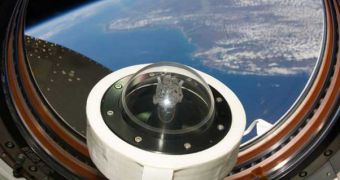In a series of new investigations, researchers in the United States were able to determine that our natural satellite may in fact contain a lot more water than previously estimated. The experts base their conclusions on new studies of the rock samples that were brought back by the Apollo 11 mission, the first manned space flight to the Moon. The recent study allowed experts to determine that the space rock began forming water early on in its history, which means that it may contain as much as 100 times more water than first thought, Space reports.
“When the rocks were first returned from the Apollo missions, it was pretty obvious that they were really dry. A lot of people attributed the dry nature to something fundamental about how the Moon formed. I think an estimate was thrown out there of less than 1 part per billion (ppb) water, because the presumption was that there was almost no water on the Moon,” explains the lead author of the new study, Carnegie Institution Geophysical Laboratory expert Francis McCubbin. The expert believes that much of the space rock's water comes from magma that formed very early on in its history.
According to geological measurements conducted on the 40-year-old space rocks brought from the Moon, it would appear that the body itself began forming some 4.5 billion years ago. The leading theory is that two planetary objects – the size of Mars and Venus, respectively – collided with each other, and then formed Earth and the Moon. As this happens, our natural satellite naturally had a lot of magma on its interior and surface. Now, Carnegie experts believe that this is one of the main sources for the object's water. In other words, they add, it may be that the Moon's waters are more concentrated in its inner parts, rather than on the exterior.
“We combined the measurements with models that characterize how the material crystallized as the moon cooled. We found that the minimum water content ranged from 64 parts per billion to 5 parts per million – at least two orders of magnitude greater than previous results,” McCubbin explains. “If we were to take all the water that is locked up inside the Moon, and put it in a homogeneous layer on the lunar surface, it would cover the moon to about a meter depth,” says the expert. Details of the investigation appear in the June 14 online early issue of the esteemed publication Proceedings of the National Academy of Sciences.

 14 DAY TRIAL //
14 DAY TRIAL //